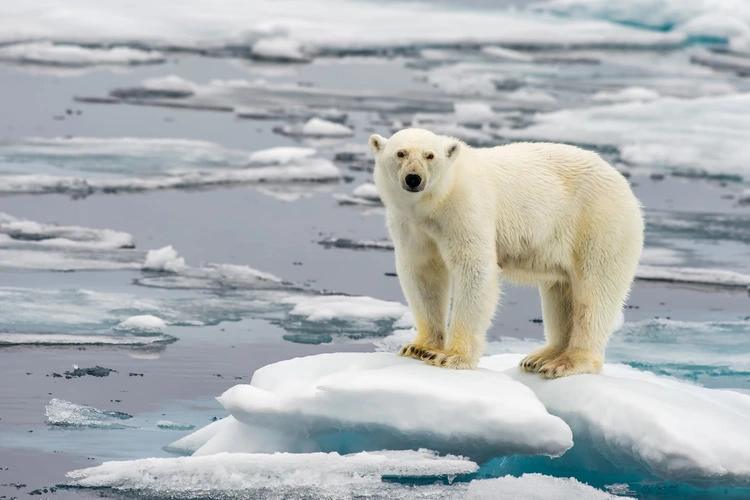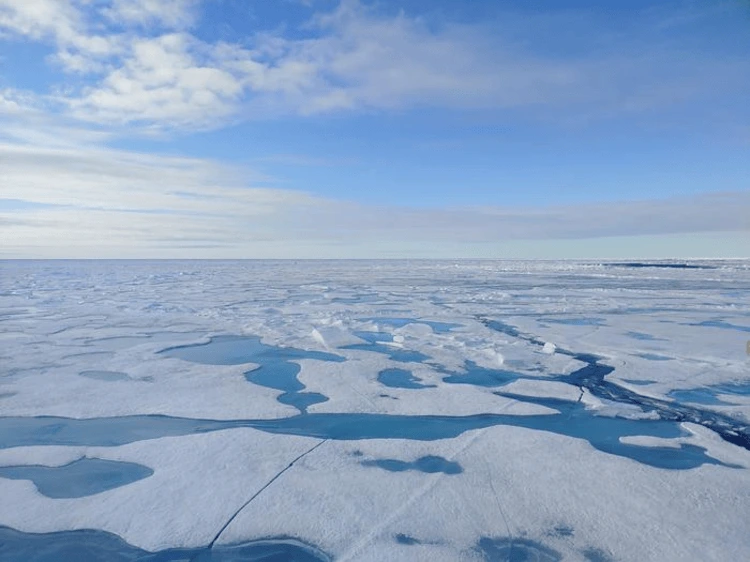
First study of its kind shows Arctic could experience first ice-free day in just three years, with significant consequences to the planet
By
New research has shown that the first summer in which ‘practically all’ Arctic sea ice will melt could occur as early as 2027, an event that would significantly impact the Earth’s ecosystem and climate by changing weather patterns.
This is the first research which has considered the exact day to which the Arctic will be without ice – earlier studies have instead looked at the first ice-free month.
Using computer models to predict when this first ice-free day could occur in the Arctic’s northernmost ocean, researchers analysed more than 300 simulations to come to a stark conclusion: most models predicted the first ice-free day could happen within nine to 20 years, regardless of how humans alter greenhouse gas emissions.
Enjoying this article? Check out our related reads:
However, that doesn’t mean humans should throw caution to the wind – researchers are keen to reinforce that any cuts in emissions could delay the timeline for an ice-free Arctic and reduce the time the ocean stays without ice.
The earliest prediction made by the model suggested an Arctic without ice could be a reality in just three years. And out of all the simulations, nine suggested an ice-free day could occur in three to six years. While researcher recognise these are extreme scenarios, the models prove they are a real possibility.

Researchers also found that a succession of extreme weather events would be able to melt at least two million sq. km of sea ice in a short period of time – for example, an unusually warm autumn weakening sea ice, followed by a warm Arctic winter and spring preventing sea ice formation. If these extreme warming events happen for several years in a row, simulations suggest the first ice-free day could be in late summer.
However, such weather patterns are not in the far-off future, but indeed a reality already faced on the planet. In March 2022, temperatures in the Arctic were around 10C warmer than average, and parts of the North Pole were almost melting.
And already, sea ice in the Arctic has disappeared at a rapid rate of more than 12 per cent per decade, with this year’s ice levels one of the lowest on record since 1978 – sitting at 4.28 million square kilometres. The threshold to becoming ice-free stands at 1 million square kilometres: anything less than this, and the region is officially declared to be without ice.
Why is Arctic sea ice important?
Without sea ice, a plethora of consequences to the planet’s climate, ecosystems and human population will take effect. Coastal communities will face greater threats of flooding and storm surges, while unpredictable weather patterns caused by melting sea ice will cause significant damage to crops and impact food security.
Sea ice also plays a valuable role in protecting the Arctic from warming. It does this by reflecting sunlight – and most importantly, the heat from it – back into space.
But when ice begins to melt, darker ocean waters become exposed to the sunlight and absorb this heat, increasing the temperatures in the Arctic and globally. This makes extreme, intense heatwaves more likely across the world.
Another potential impact of melting sea ice is the release of methane. Arctic ice and permafrost – ground that is permanently frozen – store large amounts of methane which then enters the atmosphere upon melting. This methane contributes to greater warming of the planet, and in turn, causes more ice and permafrost to melt, creating a cyclical effect in which even more methane is released.




